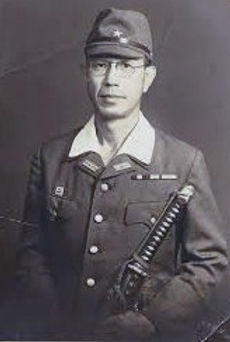TRADITIONAL IRISH PUB - CASTLETOWNBERE, BEARA PENINSULA, WEST CORK, IRELAND
The story of Dr Aidan MacCarthy's experiences while serving as an RAF medic in the Second World War - told in his book A Doctor's War (1979, 2nd editon 2005) - is truly remarkable.
He survived not only Dunkirk and awful privations as a Japanese prisoner of war, including being torpedoed on a transport ship, but also the A-bomb explosion at Nagasaki in 1945.




After graduation at UCC, Aidan was initially unable to find work as a doctor. With war looming, he volunteered for the RAF.
Aidan was stationed first in northern France with the British Expeditionary Force. When Germany invaded the Low Countries and France, the British and French armies retreated. Aidan took a convoy of 15 vehicles, strafed and dive-bombed, to Dunkirk.
Aidan spent two days and three nights on the beaches of Dunkirk sheltering from German air attacks before being evacuated. A torpedo struck the ship, causing numerous casualties, and Aidan and colleagues converted a dining room into a makeshift operating theatre. With a hole at the waterline, the ship was tilted so the captain ordered troops to move to the opposite side In this fashion, the ferry made it to England.
In May 1941, Aidan risked life and limb when an RAF Wellington bomber crash-landed at RAF Honington, Suffolk, UK, after a raid on Germany. The pilot came in too fast and the plane's wing clipped a bomb dump and crashed there. As the fuel tanks, ammunition and flares ignited, Aidan helped to drag two surviving aircrew clear. For this, Aidan was awarded the George Medal for bravery.
In 1942, Aidan’s squadron sailed to Singapore to help stem the Japanese invasion of Malaya. But there was surrender to the Japanese, and more than 80,000 British soldiers were captured in one of the worst defeats in British military history. As prisoners of war, beatings, starvation and forced labour began, lasting from March 1942 until August 1945.
Over almost three and a half years, Aidan saved many of his fellow prisoners lives by improvising with scant resources. He developed special diets to treat beri-beri, dysentery and malaria. He smuggled yeast cultures hidden in rice balls for a protein drink to treat the sick. Extremely malnourished prisoners were fed a protein-rich soup created by creaming off maggots from cooking meagre foods the Japanese gave the POWs.
In April 1944, Aidan was put on a transport ship with 980 POWs bound for Japan as part of a convoy of 14 vessels. As the ship approached Japan, a US submarine made a direct hit on it with a torpedo. Aidan was one of about 40 POWs who survived, to be picked up by a Japanese destroyer. When it was realised they were Allied POWs, some were beaten unconscious and thrown overboard. Aidan and others jumped overboard to save themselves, some being caught in the ship’s propellers. Finally a Japanese whaling ship rescued them and brought them to Nagasaki.
On the morning of August 9, 1945, air raid sirens sounded over Nagasaki. Two US B29 bombers dropped three parachutes as Aidan and fellow POWs crouched in a makeshift bomb shelter as the A-bomb detonated. Aidan emerged to find the city obliterated. The sun was blacked out and a ten-mile high mushroom cloud towered over the city. A black rain began to fall.
Aidan and colleagues tried to help victims amid horrific scenes as skin and limbs peeled away. They left the city and assisted in the relief efforts in makeshift hospitals. A few days later they were recaptured and sent to POW camp 26 at Keisen.
Here they worked in mines until Japan surrendered on August 15. As the senior ranking officer, Aidan took command, issuing orders to former POWs to maintain discipline at the camp. It was then that Aidan saved the life of the camp commandant, second lieutenant Isao Kusuno, by hiding him from prisoners who gladly would have lynched him. It was for this honourable act that Kusuno gave Aidan his ceremonial sword. Interestingly, Aidan did not include this episode in his book A Doctor's War, perhaps out of modesty.
Returning to Ireland, Aidan weighed just over seven stones having left Cork seven years before weighing 14 stones. After several months recuperating in Castletownbere, he returned to the RAF and continued an illustrious career in charge of hospitals and military facilities in France, Germany, Austria, UK, Hong Kong, Singapore, achieving the rank of Air Commodore.
In 1948, he married Kathleen, whose family was from Co Galway. He received an OBE for his medical work as a doctor and, after retiring from the RAF, lived in London with his family, and worked there as a civilian medical practitioner until he was 80.
In 1977, Aidan was diagnosed with a brain tumour (fortunately benign) which he felt sure was a result of the beatings he had had in the POW camps. As part of his recuperation, he was advised by doctors to write down his wartime memories and, in 1979, A Doctor’s War was published.
Aidan died in 1995 in London and was returned to Castletownbere where he is buried.
After the funeral on October 18,1995, mourners gathered at a local hotel heard Aidan’s voice on the radio – the broadcast of an interview which, by chance, had been delayed until that day.
* To hear this interview - 'Away to War' in the RTE 'Documentary on One' series - start the player below.



From left: Aidan, standing, third from right, with colleagues at RAF Honington in1940; the telegram from Aidan's mother welcoming him home from the war; Second Lieutenant Isao Kusuno with sword.